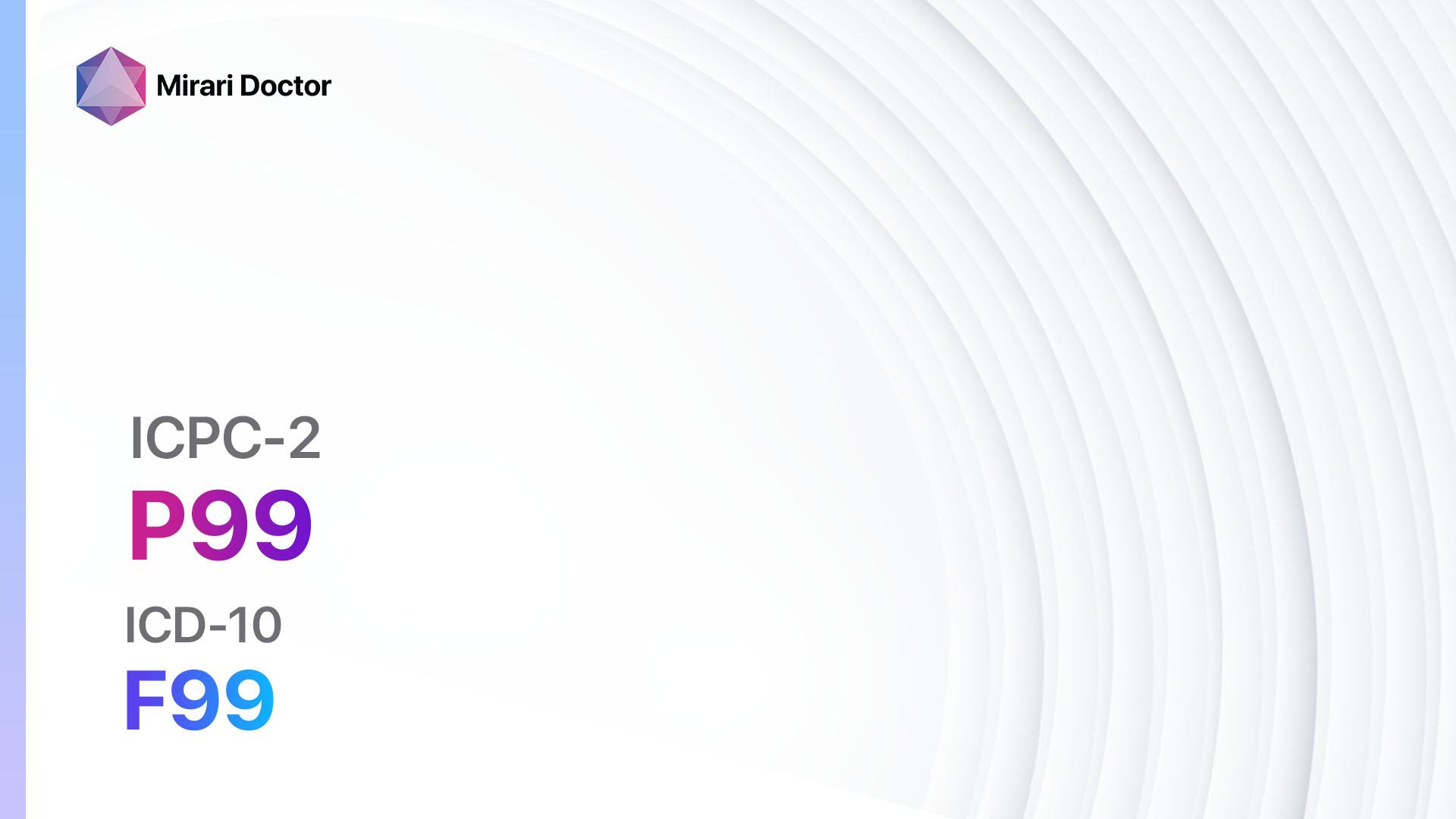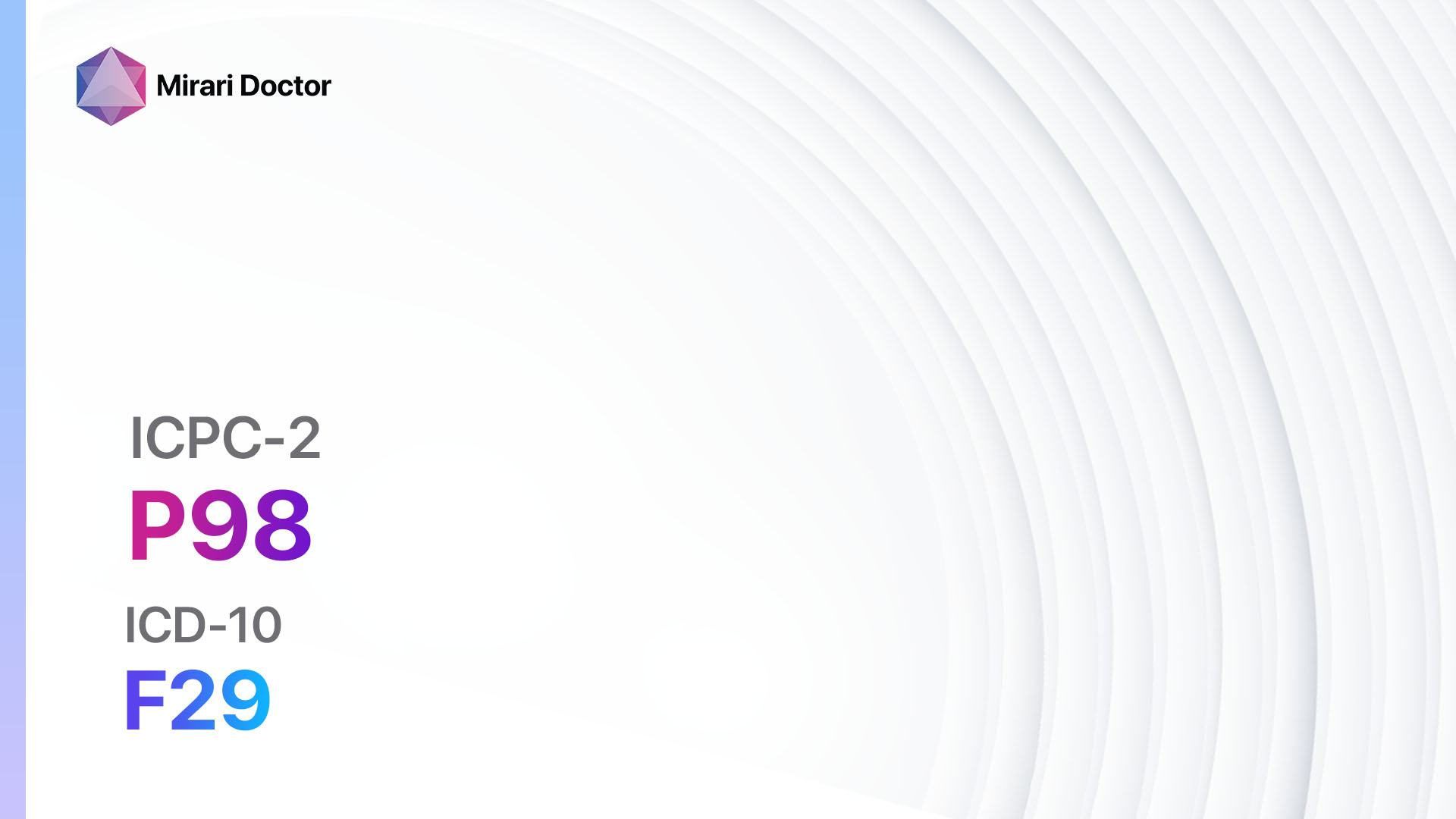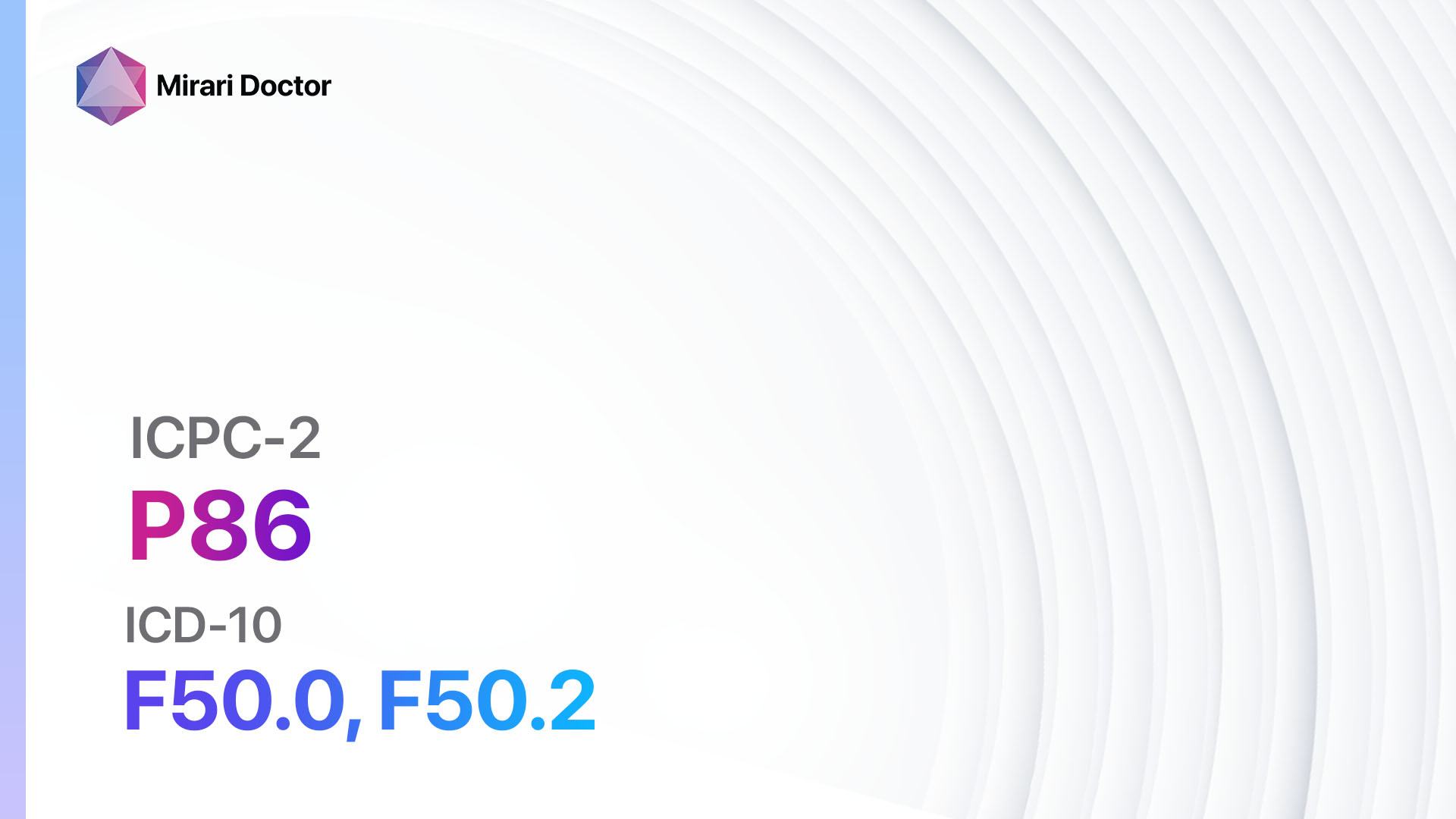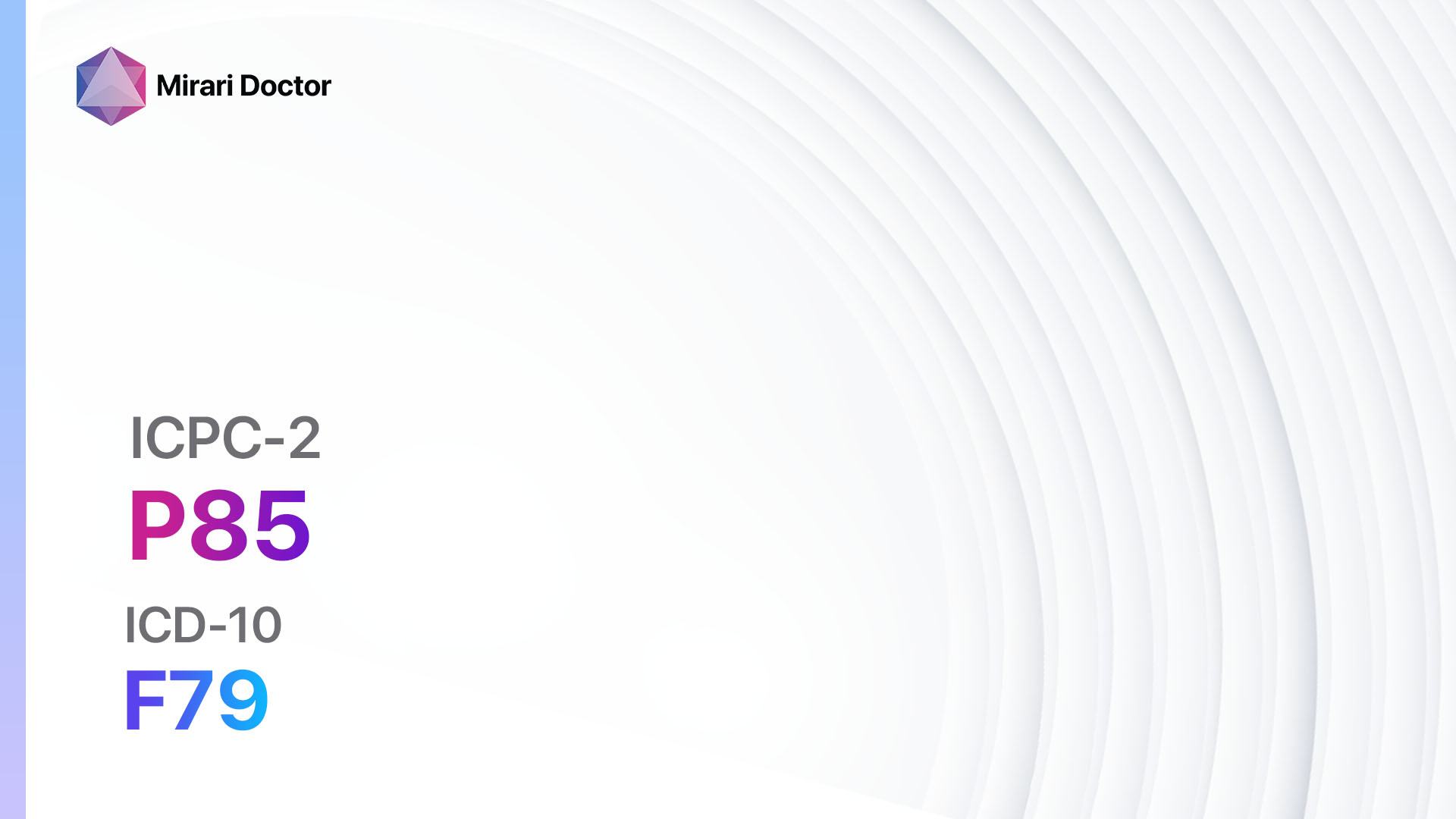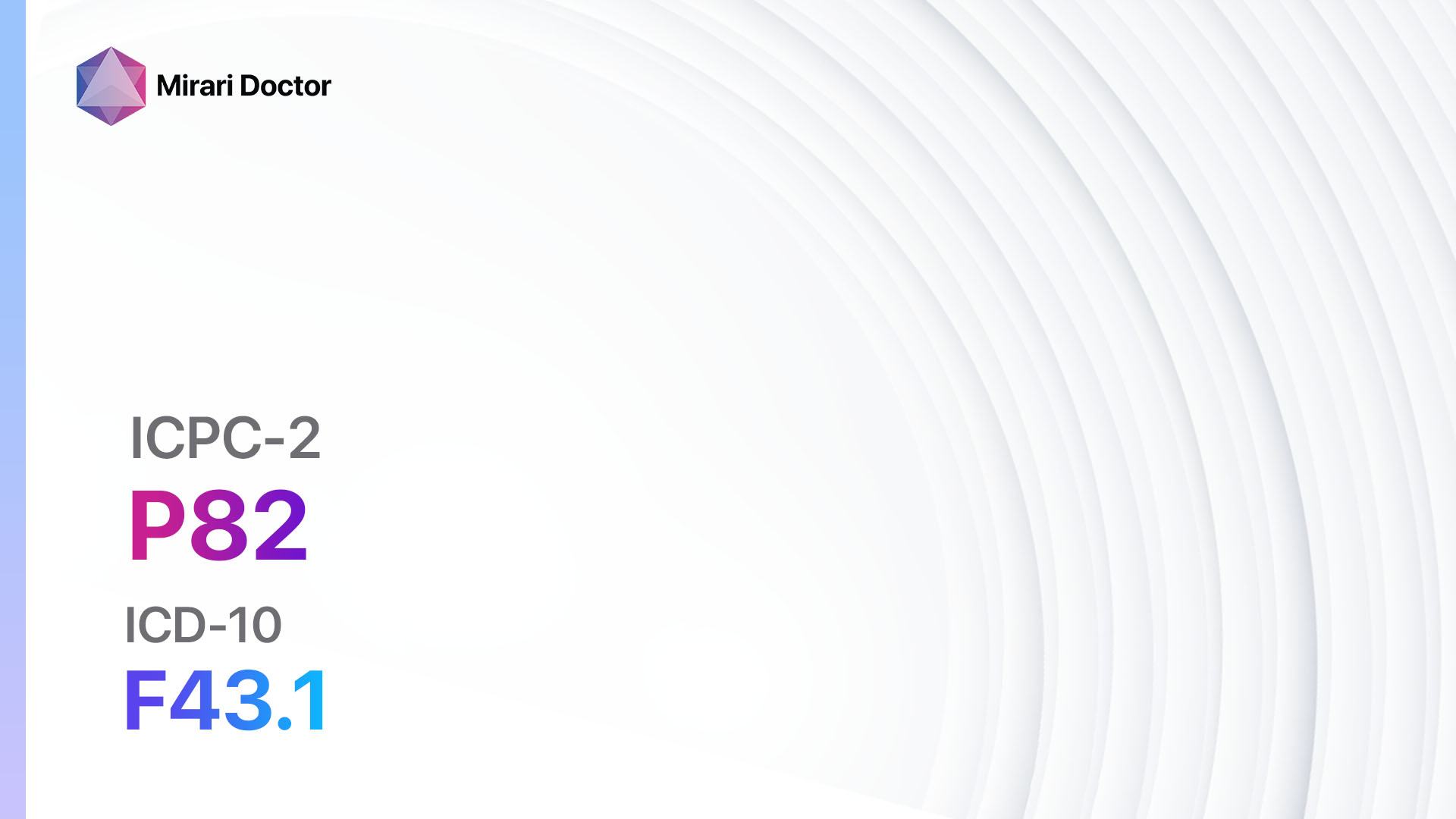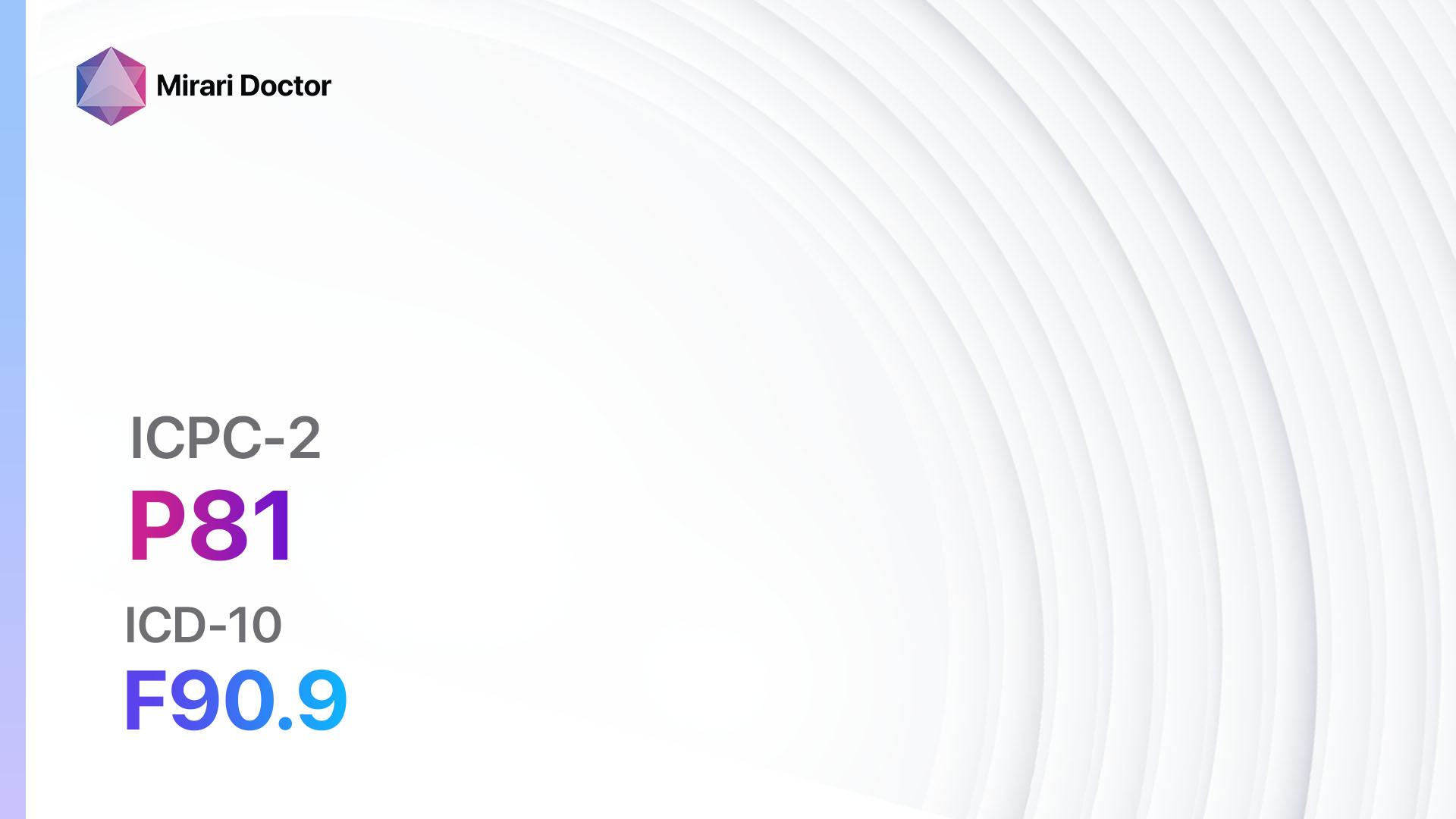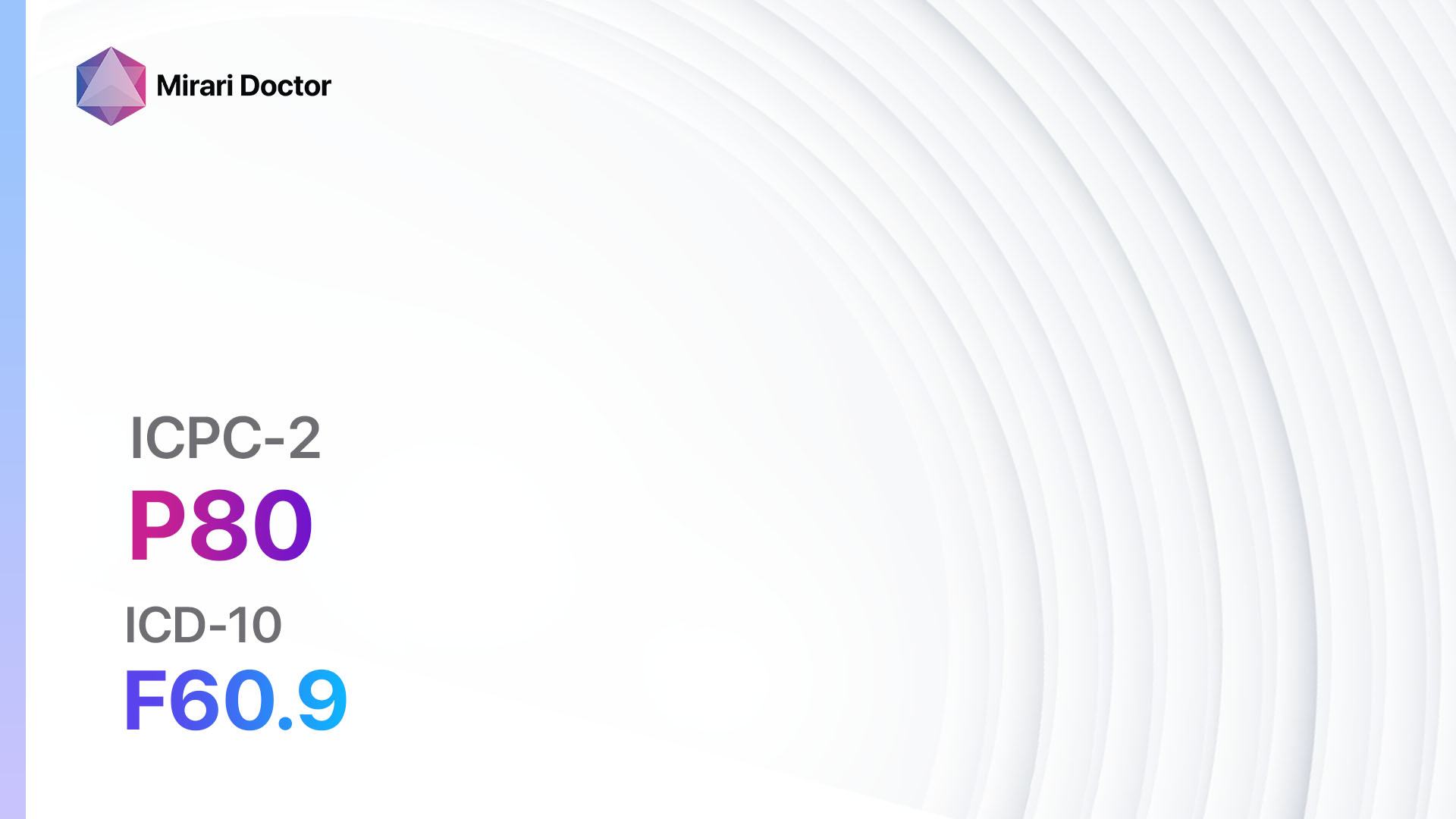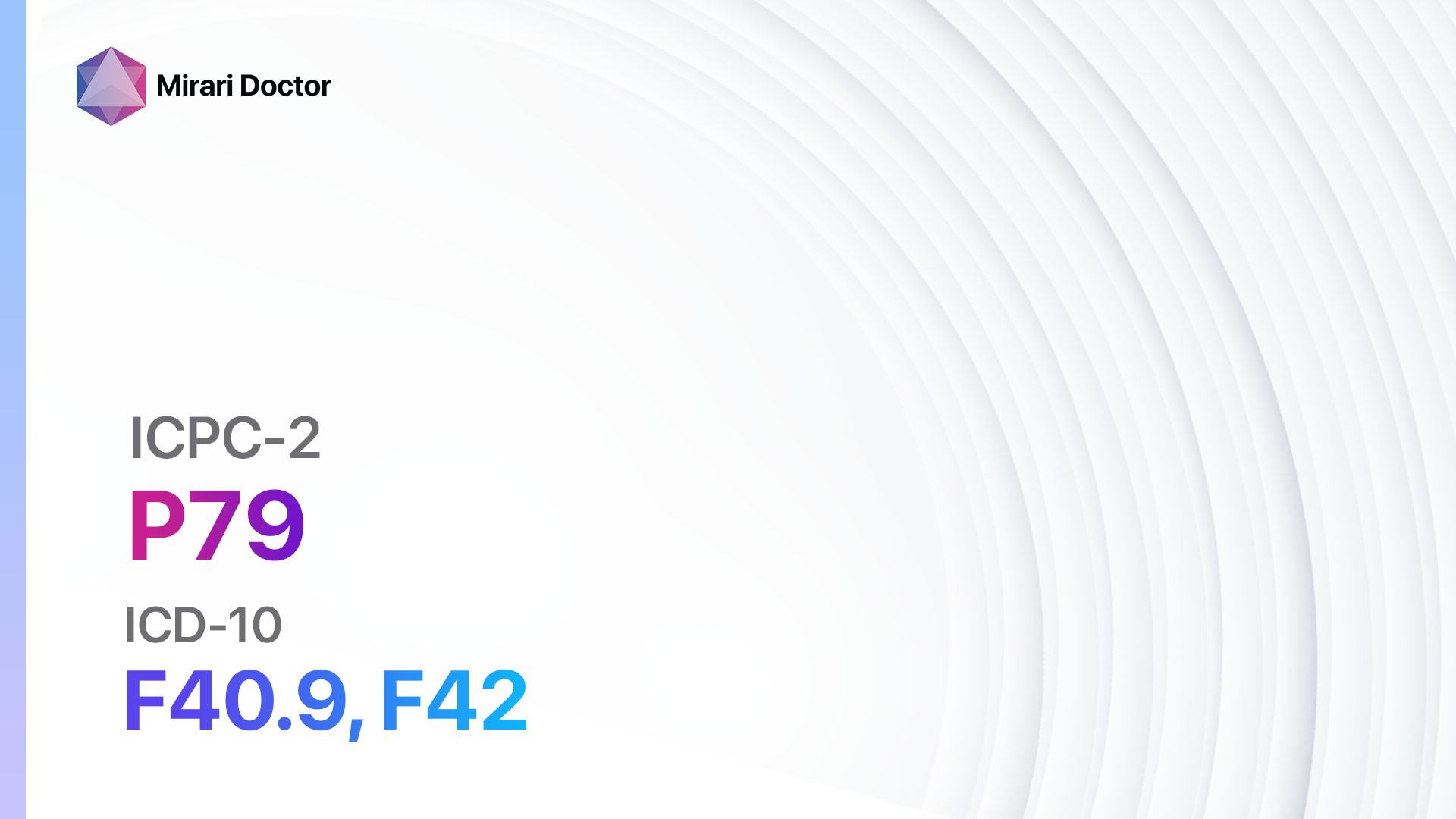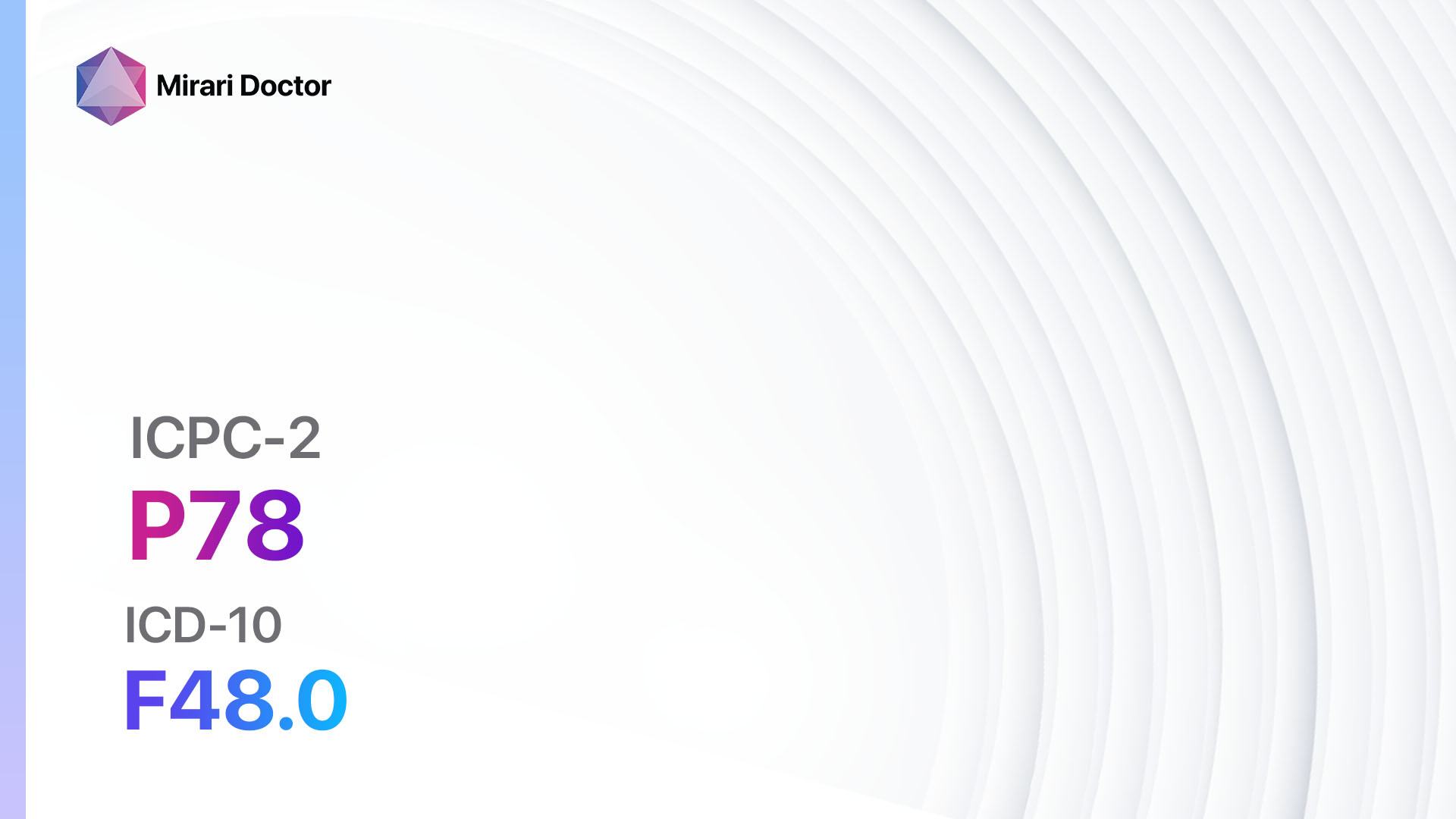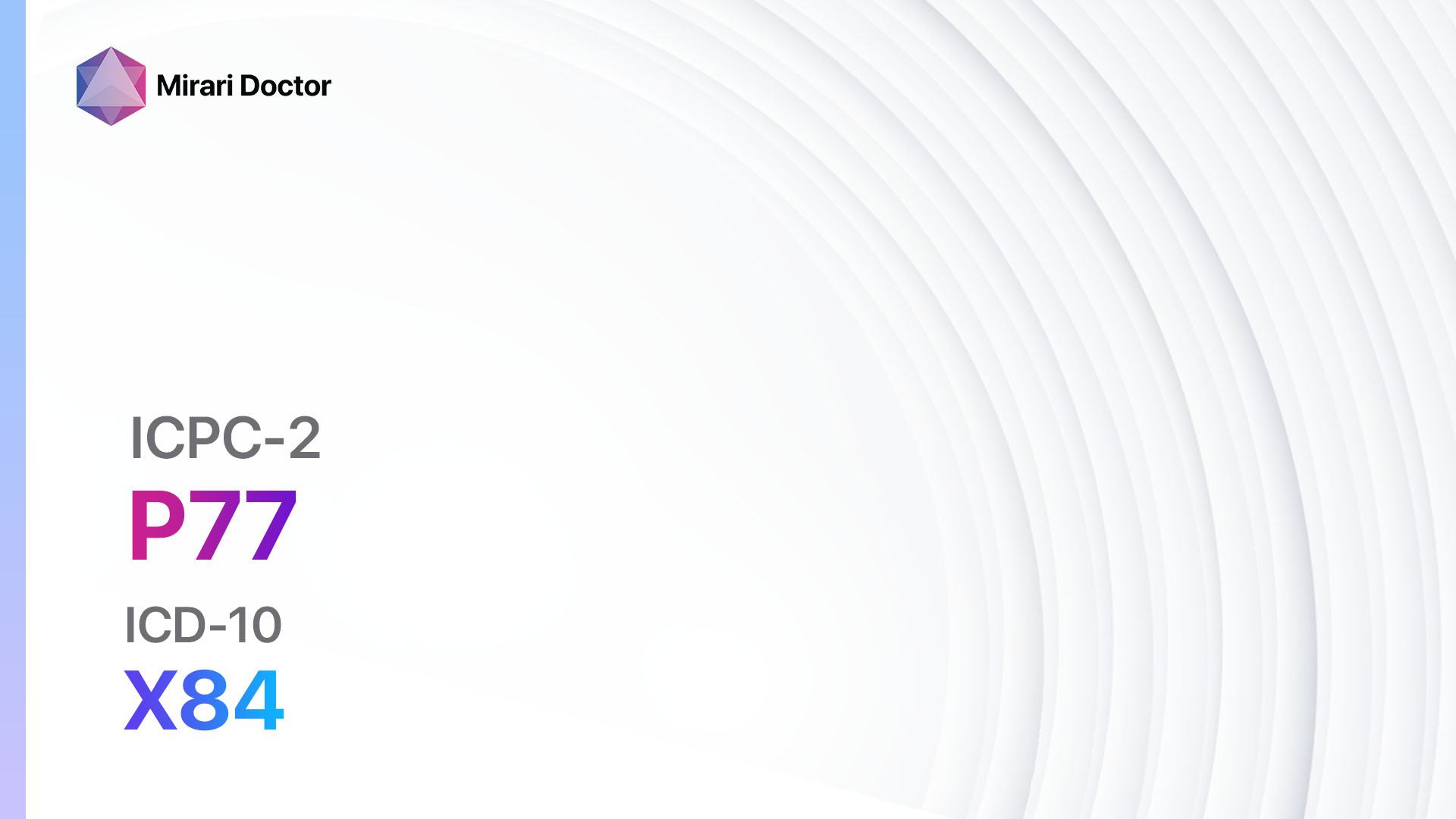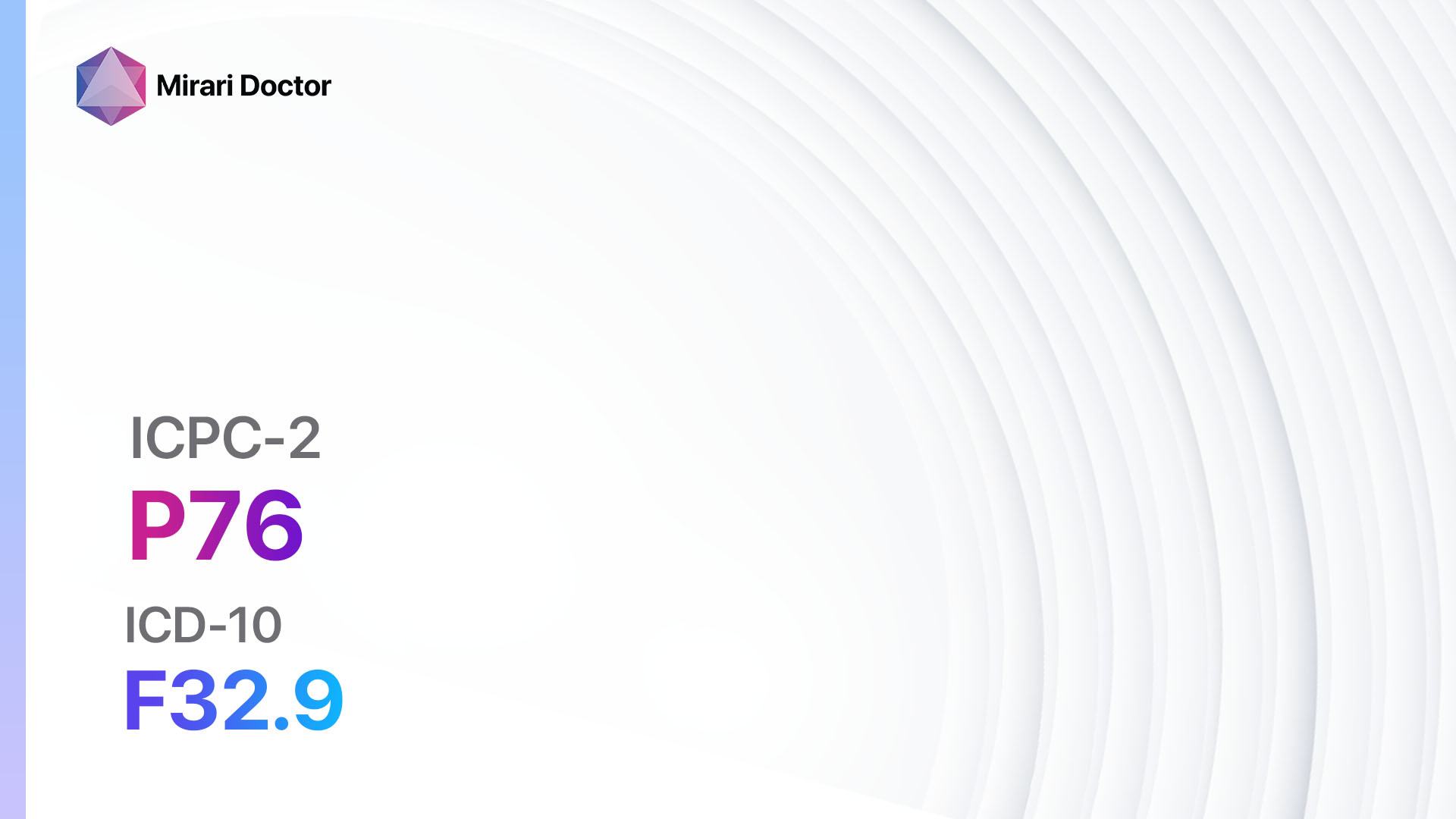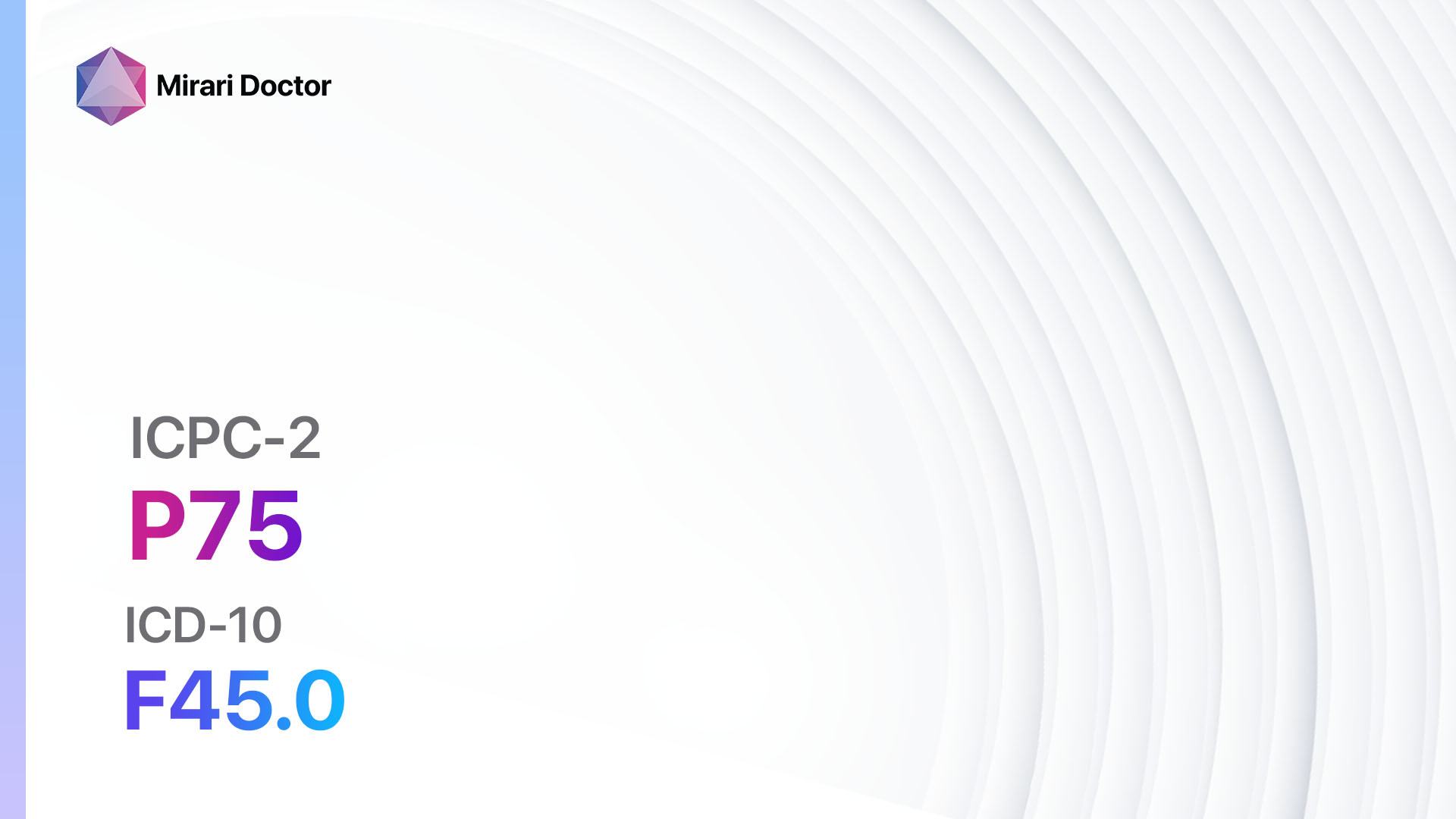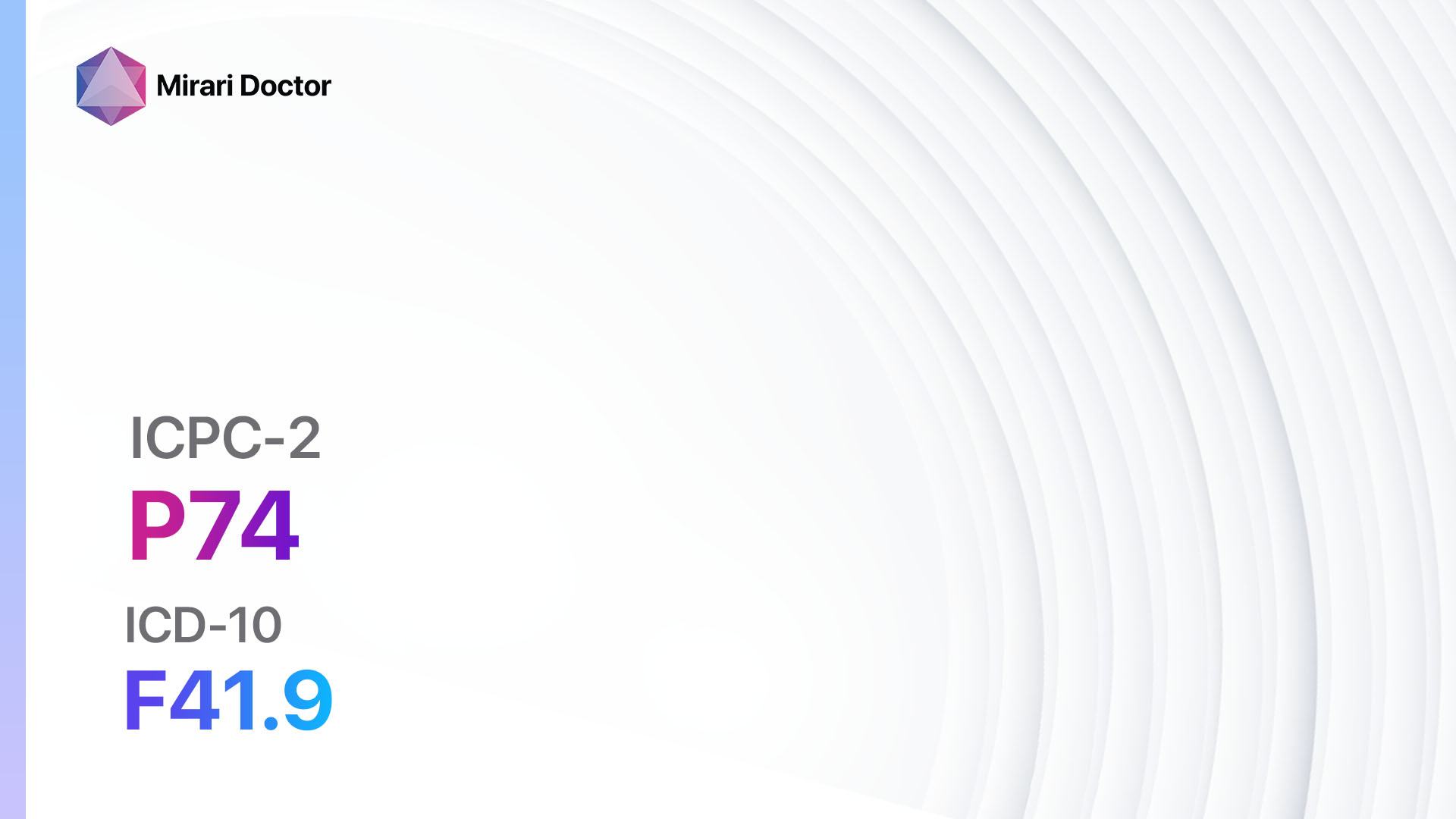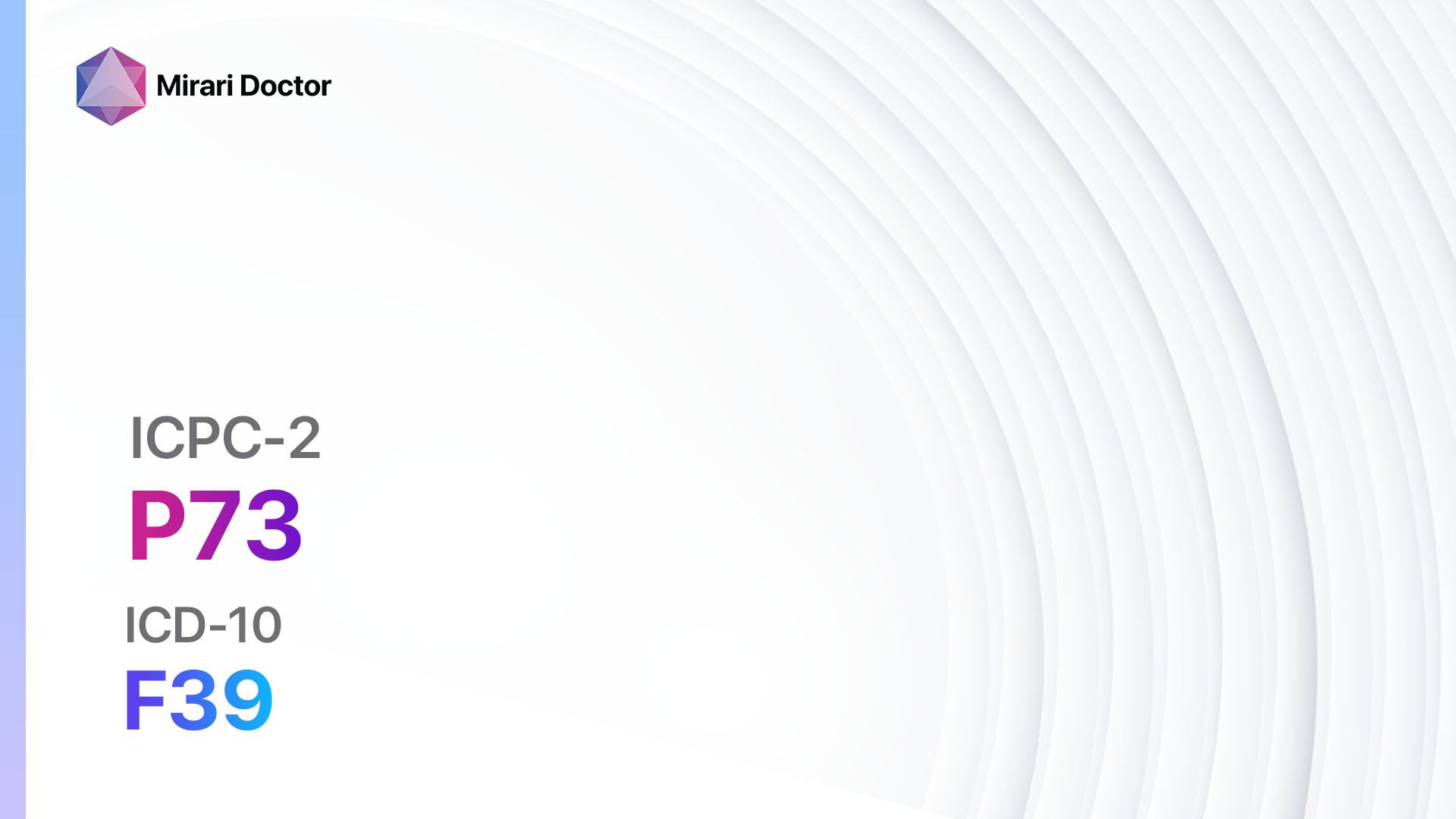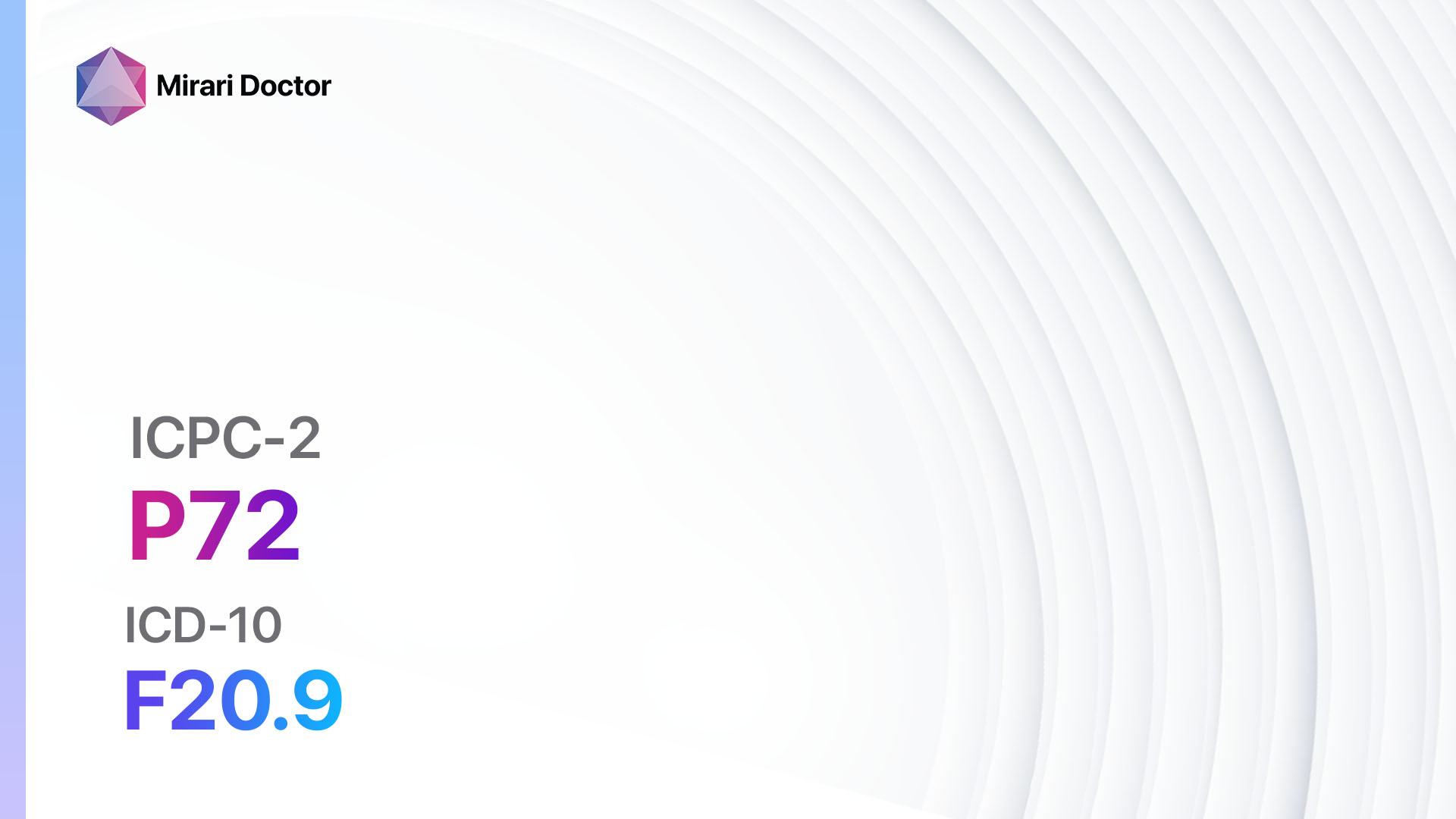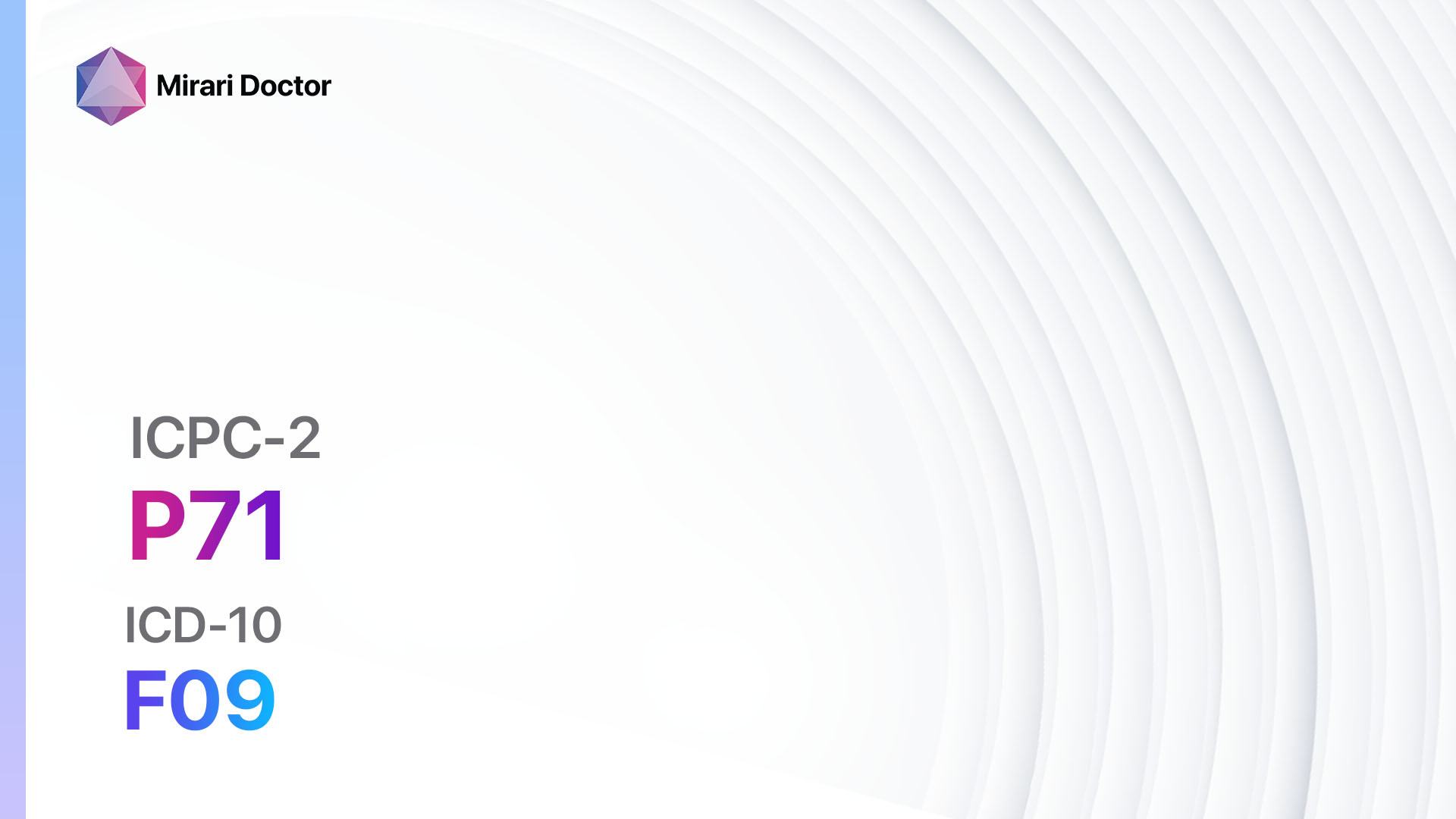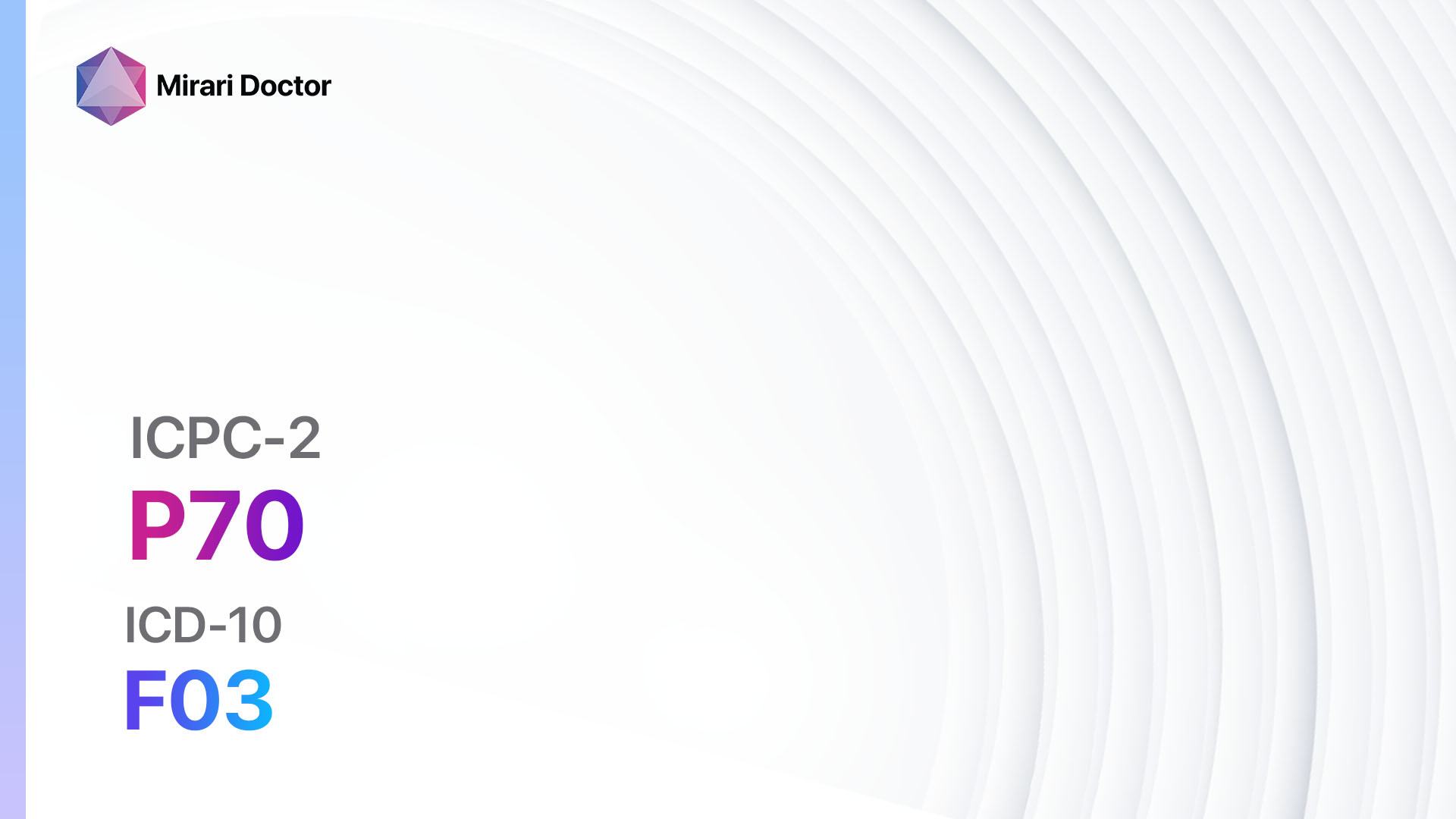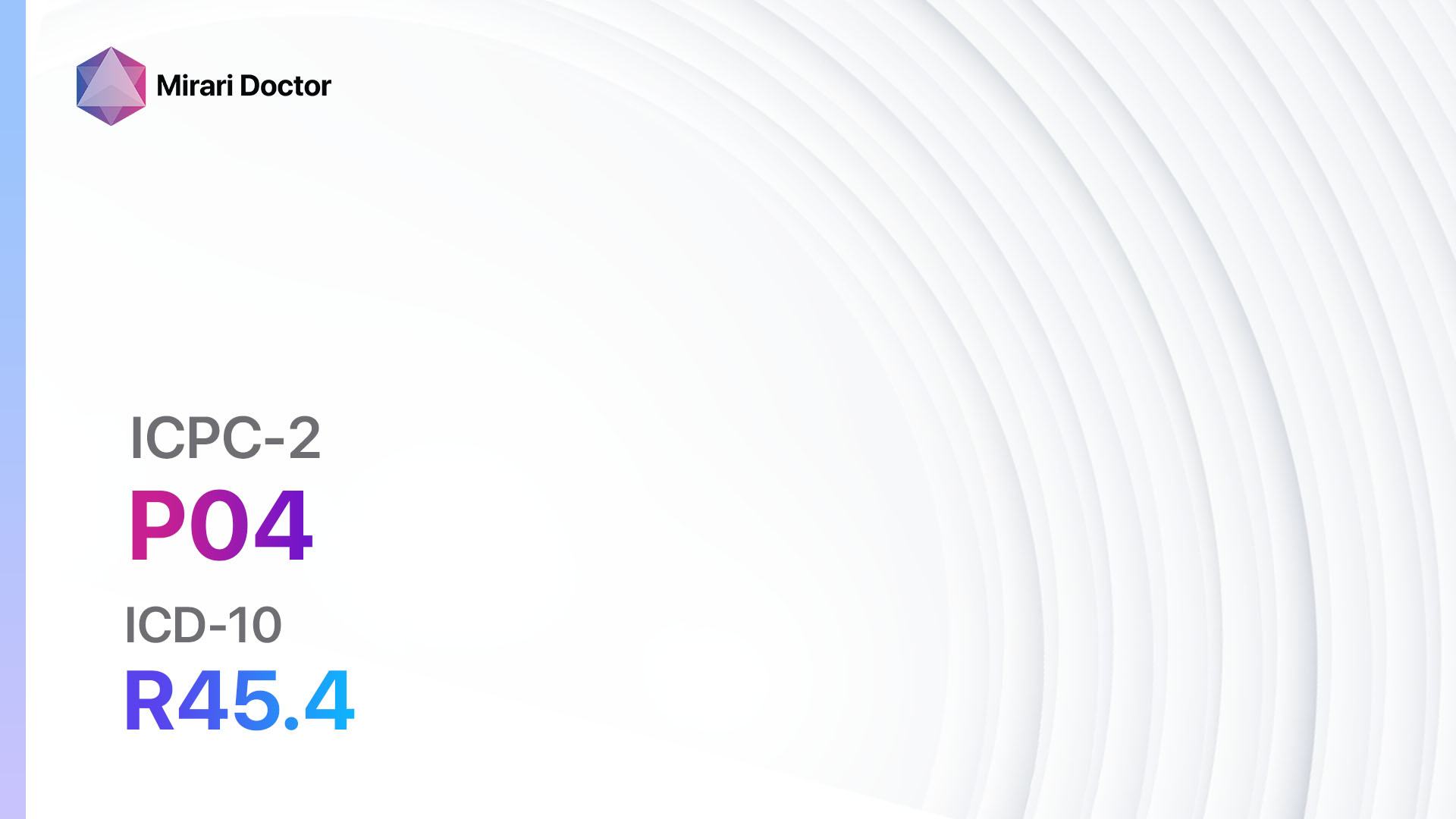
Introduction
Feeling/behaving irritable/angry is a common condition that can significantly impact an individual’s quality of life and relationships. It is characterized by frequent episodes of irritability, anger, and difficulty controlling emotions.[1] This guide aims to provide healthcare professionals with a comprehensive approach to diagnosing and managing this condition.
Codes
Symptoms
- Frequent episodes of irritability
- Anger outbursts
- Difficulty controlling emotions
- Restlessness
- Increased heart rate
- Muscle tension
- Difficulty concentrating
- Sleep disturbances[2]
Causes
- Stress and anxiety
- Depression
- Hormonal imbalances
- Substance abuse
- Chronic pain or illness
- Sleep disorders
- Medication side effects[3]
Diagnostic Steps
Medical History
- Gather information about the patient’s personal and family medical history
- Identify any risk factors, such as a history of mental health disorders or substance abuse
- Assess the presence of any medical conditions or chronic pain that may contribute to irritability and anger
- Evaluate the patient’s sleep patterns and quality[4]
Physical Examination
- Perform a thorough physical examination to rule out any underlying medical conditions that may be causing or exacerbating the symptoms
- Assess vital signs, including heart rate and blood pressure
- Check for signs of chronic pain or inflammation
- Evaluate the patient’s overall appearance and behavior[5]
Laboratory Tests
- Complete blood count (CBC) to rule out any underlying infections or systemic conditions
- Thyroid function tests to assess for hormonal imbalances
- Liver function tests to evaluate for any medication-related liver damage
- Urine drug screen to identify any substance abuse[6]
Diagnostic Imaging
- Brain imaging, such as an MRI or CT scan, may be considered if there are concerns about structural abnormalities or brain lesions contributing to the symptoms
- Sleep study (polysomnography) to assess for any sleep disorders that may be causing or exacerbating irritability and anger[7]
Other Tests
- Psychological assessment, such as the Beck Depression Inventory or the Hamilton Anxiety Rating Scale, to evaluate the presence and severity of depression and anxiety
- Substance abuse screening to identify any underlying substance abuse issues[8]
Follow-up and Patient Education
- Schedule regular follow-up appointments to monitor the patient’s progress and adjust treatment as needed
- Provide education on stress management techniques, anger management strategies, and healthy coping mechanisms
- Encourage the patient to engage in regular physical exercise, maintain a balanced diet, and prioritize sleep hygiene
- Discuss the importance of seeking support from friends, family, or mental health professionals[9][10]
Possible Interventions
Traditional Interventions
Medications:
Top 5 drugs for Feeling/behaving irritable/angry:
- Selective Serotonin Reuptake Inhibitors (SSRIs) (e.g., Sertraline, Fluoxetine):
- Cost: Generic versions can be $10-$50/month.
- Contraindications: Hypersensitivity to SSRIs, concurrent use of monoamine oxidase inhibitors (MAOIs).
- Side effects: Nausea, headache, sexual dysfunction.
- Severe side effects: Serotonin syndrome, suicidal thoughts.
- Drug interactions: MAOIs, St. John’s Wort, certain migraine medications.
- Warning: Close monitoring for worsening depression or suicidal thoughts.
- Benzodiazepines (e.g., Diazepam, Lorazepam):
- Cost: Generic versions can be $10-$30/month.
- Contraindications: History of substance abuse, respiratory depression.
- Side effects: Drowsiness, dizziness, confusion.
- Severe side effects: Respiratory depression, dependence.
- Drug interactions: Alcohol, opioids, certain antifungal medications.
- Warning: Risk of dependence and withdrawal symptoms.
- Beta-blockers (e.g., Propranolol, Atenolol):
- Cost: Generic versions can be $10-$30/month.
- Contraindications: Severe bradycardia, heart failure.
- Side effects: Fatigue, dizziness, low blood pressure.
- Severe side effects: Bronchospasm, heart block.
- Drug interactions: Calcium channel blockers, insulin.
- Warning: Should not be abruptly stopped.
- Anticonvulsants (e.g., Valproic Acid, Lamotrigine):
- Cost: Generic versions can be $10-$50/month.
- Contraindications: Hypersensitivity to anticonvulsants, liver disease.
- Side effects: Nausea, dizziness, sedation.
- Severe side effects: Liver toxicity, suicidal thoughts.
- Drug interactions: Oral contraceptives, certain antibiotics.
- Warning: Regular liver function tests required.
- Antipsychotics (e.g., Risperidone, Quetiapine):
- Cost: Generic versions can be $10-$50/month.
- Contraindications: Hypersensitivity to antipsychotics, dementia-related psychosis.
- Side effects: Weight gain, sedation, extrapyramidal symptoms.
- Severe side effects: Neuroleptic malignant syndrome, tardive dyskinesia.
- Drug interactions: Other antipsychotics, certain antidepressants.
- Warning: Increased risk of mortality in elderly patients with dementia-related psychosis.
Alternative Drugs:
- Mood stabilizers (e.g., Lithium, Carbamazepine): Used for individuals with underlying mood disorders.
- Alpha-2 adrenergic agonists (e.g., Clonidine, Guanfacine): May help with impulsivity and aggression.
- Antidepressants (e.g., Bupropion, Mirtazapine): Can be considered if depression is a contributing factor.
- Anxiolytics (e.g., Buspirone, Hydroxyzine): May help with anxiety-related irritability.
Surgical Procedures:
- There are no surgical procedures specifically indicated for the treatment of feeling/behaving irritable/angry.
Alternative Interventions
- Acupuncture: May help reduce stress and promote relaxation. Cost: $60-$120 per session.
- Yoga and meditation: Can help improve emotional well-being and reduce irritability. Cost: Varies depending on the location and instructor.
- Cognitive-behavioral therapy (CBT): A form of psychotherapy that helps individuals identify and change negative thought patterns and behaviors. Cost: $100-$200 per session.
- Mindfulness-based stress reduction (MBSR): Teaches individuals to focus on the present moment and develop a non-judgmental awareness of their thoughts and emotions. Cost: $200-$400 for an 8-week program.
- Herbal supplements: Some herbs, such as St. John’s Wort and Valerian root, may have potential benefits for reducing irritability and promoting relaxation. Cost: Varies depending on the specific supplement.
Lifestyle Interventions
- Regular exercise: Engaging in physical activity can help reduce stress and improve mood. Cost: Varies depending on the chosen activity (e.g., gym membership, fitness classes).
- Healthy diet: Consuming a balanced diet rich in fruits, vegetables, whole grains, and lean proteins can support overall well-being. Cost: Varies depending on individual food choices.
- Sleep hygiene: Establishing a consistent sleep schedule and creating a relaxing bedtime routine can improve sleep quality and reduce irritability. Cost: Minimal.
- Stress management techniques: Encourage the use of stress reduction techniques such as deep breathing exercises, progressive muscle relaxation, and journaling. Cost: Minimal.
- Supportive relationships: Encourage the patient to seek support from friends, family, or support groups to help manage stress and emotions. Cost: Minimal.
It is important to note that the cost ranges provided are approximate and may vary depending on the location and availability of the interventions.
Mirari Cold Plasma Alternative Intervention
Understanding Mirari Cold Plasma
- Safe and Non-Invasive Treatment: Mirari Cold Plasma is a safe and non-invasive treatment option for various skin conditions. It does not require incisions, minimizing the risk of scarring, bleeding, or tissue damage.
- Efficient Extraction of Foreign Bodies: Mirari Cold Plasma facilitates the removal of foreign bodies from the skin by degrading and dissociating organic matter, allowing easier access and extraction.
- Pain Reduction and Comfort: Mirari Cold Plasma has a local analgesic effect, providing pain relief during the treatment, making it more comfortable for the patient.
- Reduced Risk of Infection: Mirari Cold Plasma has antimicrobial properties, effectively killing bacteria and reducing the risk of infection.
- Accelerated Healing and Minimal Scarring: Mirari Cold Plasma stimulates wound healing and tissue regeneration, reducing healing time and minimizing the formation of scars.
Mirari Cold Plasma Prescription
Video instructions for using Mirari Cold Plasma Device – P04 Feeling/behaving irritable/angry (ICD-10:R45.4)
| Mild | Moderate | Severe |
| Mode setting: 2 (Wound Healing) Location: 7 (Neuro system & ENT) Morning: 15 minutes, Evening: 15 minutes |
Mode setting: 2 (Wound Healing) Location: 7 (Neuro system & ENT) Morning: 30 minutes, Lunch: 30 minutes, Evening: 30 minutes |
Mode setting: 2 (Wound Healing) Location: 7 (Neuro system & ENT) Morning: 30 minutes, Lunch: 30 minutes, Evening: 30 minutes |
| Mode setting: 8 (Insomnia) Location: 7 (Neuro system & ENT) Morning: 15 minutes, Evening: 15 minutes |
Mode setting: 8 (Insomnia) Location: 7 (Neuro system & ENT) Morning: 30 minutes, Lunch: 30 minutes, Evening: 30 minutes |
Mode setting: 8 (Insomnia) Location: 7 (Neuro system & ENT) Morning: 30 minutes, Lunch: 30 minutes, Evening: 30 minutes |
| Total Morning: 30 minutes approx. $5 USD, Evening: 30 minutes approx. $5 USD |
Total Morning: 60 minutes approx. $10 USD, Lunch: 60 minutes approx. $10 USD, Evening: 60 minutes approx. $10 USD, |
Total Morning: 60 minutes approx. $10 USD, Lunch: 60 minutes approx. $10 USD, Evening: 60 minutes approx. $10 USD, |
| Usual treatment for 7-60 days approx. $70 USD – $600 USD | Usual treatment for 6-8 weeks approx. $1,260 USD – $1,680 USD |
Usual treatment for 3-6 months approx. $2,700 USD – $5,400 USD
|
 |
|
Use the Mirari Cold Plasma device to treat Feeling/behaving irritable/angry effectively.
WARNING: MIRARI COLD PLASMA IS DESIGNED FOR THE HUMAN BODY WITHOUT ANY ARTIFICIAL OR THIRD PARTY PRODUCTS. USE OF OTHER PRODUCTS IN COMBINATION WITH MIRARI COLD PLASMA MAY CAUSE UNPREDICTABLE EFFECTS, HARM OR INJURY. PLEASE CONSULT A MEDICAL PROFESSIONAL BEFORE COMBINING ANY OTHER PRODUCTS WITH USE OF MIRARI.
Step 1: Cleanse the Skin
- Start by cleaning the affected area of the skin with a gentle cleanser or mild soap and water. Gently pat the area dry with a clean towel.
Step 2: Prepare the Mirari Cold Plasma device
- Ensure that the Mirari Cold Plasma device is fully charged or has fresh batteries as per the manufacturer’s instructions. Make sure the device is clean and in good working condition.
- Switch on the Mirari device using the power button or by following the specific instructions provided with the device.
- Some Mirari devices may have adjustable settings for intensity or treatment duration. Follow the manufacturer’s instructions to select the appropriate settings based on your needs and the recommended guidelines.
Step 3: Apply the Device
- Place the Mirari device in direct contact with the affected area of the skin. Gently glide or hold the device over the skin surface, ensuring even coverage of the area experiencing.
- Slowly move the Mirari device in a circular motion or follow a specific pattern as indicated in the user manual. This helps ensure thorough treatment coverage.
Step 4: Monitor and Assess:
- Keep track of your progress and evaluate the effectiveness of the Mirari device in managing your Feeling/behaving irritable/angry. If you have any concerns or notice any adverse reactions, consult with your health care professional.
Note
This guide is for informational purposes only and should not replace the advice of a medical professional. Always consult with your healthcare provider or a qualified medical professional for personal advice, diagnosis, or treatment. Do not solely rely on the information presented here for decisions about your health. Use of this information is at your own risk. The authors of this guide, nor any associated entities or platforms, are not responsible for any potential adverse effects or outcomes based on the content.
Mirari Cold Plasma System Disclaimer
- Purpose: The Mirari Cold Plasma System is a Class 2 medical device designed for use by trained healthcare professionals. It is registered for use in Thailand and Vietnam. It is not intended for use outside of these locations.
- Informational Use: The content and information provided with the device are for educational and informational purposes only. They are not a substitute for professional medical advice or care.
- Variable Outcomes: While the device is approved for specific uses, individual outcomes can differ. We do not assert or guarantee specific medical outcomes.
- Consultation: Prior to utilizing the device or making decisions based on its content, it is essential to consult with a Certified Mirari Tele-Therapist and your medical healthcare provider regarding specific protocols.
- Liability: By using this device, users are acknowledging and accepting all potential risks. Neither the manufacturer nor the distributor will be held accountable for any adverse reactions, injuries, or damages stemming from its use.
- Geographical Availability: This device has received approval for designated purposes by the Thai and Vietnam FDA. As of now, outside of Thailand and Vietnam, the Mirari Cold Plasma System is not available for purchase or use.
References
- Safer, D. J. (2009). Irritable mood and the Diagnostic and Statistical Manual of Mental Disorders. Child and Adolescent Psychiatry and Mental Health, 3(1), 35.
- Toohey, M. J., & DiGiuseppe, R. (2017). Defining and measuring irritability: Construct clarification and differentiation. Clinical Psychology Review, 53, 93-108.
- Vidal-Ribas, P., Brotman, M. A., Valdivieso, I., Leibenluft, E., & Stringaris, A. (2016). The status of irritability in psychiatry: a conceptual and quantitative review. Journal of the American Academy of Child & Adolescent Psychiatry, 55(7), 556-570.
- Sukhodolsky, D. G., Smith, S. D., McCauley, S. A., Ibrahim, K., & Piasecka, J. B. (2016). Behavioral interventions for anger, irritability, and aggression in children and adolescents. Journal of Child and Adolescent Psychopharmacology, 26(1), 58-64.
- Leibenluft, E. (2017). Pediatric irritability: a systems neuroscience approach. Trends in Cognitive Sciences, 21(4), 277-289.
- Stringaris, A., Vidal-Ribas, P., Brotman, M. A., & Leibenluft, E. (2018). Practitioner review: Definition, recognition, and treatment challenges of irritability in young people. Journal of Child Psychology and Psychiatry, 59(7), 721-739.
- Brotman, M. A., Kircanski, K., & Leibenluft, E. (2017). Irritability in children and adolescents. Annual Review of Clinical Psychology, 13, 317-341.
- Wakschlag, L. S., Perlman, S. B., Blair, R. J., Leibenluft, E., Briggs‐Gowan, M. J., & Pine, D. S. (2018). The neurodevelopmental basis of early childhood disruptive behavior: Irritable and callous phenotypes as exemplars. American Journal of Psychiatry, 175(2), 114-130.
- Copeland, W. E., Brotman, M. A., & Costello, E. J. (2015). Normative irritability in youth: Developmental findings from the Great Smoky Mountains Study. Journal of the American Academy of Child & Adolescent Psychiatry, 54(8), 635-642.
- Leibenluft, E., & Stoddard, J. (2013). The developmental psychopathology of irritability. Development and Psychopathology, 25(4pt2), 1473-1487.
Related articles
Made in USA


